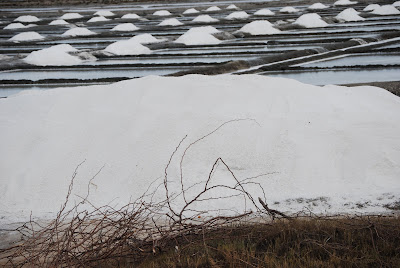
I attended the NTP, a Naturalist Training Programme organised by Jungle Lodges in Bannarghatta and got hooked on to birding. I did a lot of birding tours in and around Bangalore and in some of the JLR properties this year. I also visited Kumbalgarh and Shimla thanks to Club Mahindra as a part of their activities - Cerebrate and Bloggers Meet. I also got my new DSLR this year thanks to my brother and attempted photography . Cities like Chennai, Delhi and Mumbai were part of my itineraries.Its difficult to compare each journey or rate destinations as they are unique, but I believe that every trip has had something special for me..so here I go, on a nostalgic trip as I recall some of the key destinations in 2009
January 2009, Mysored - First Destination of the year
I spent my birthday last year in Mysore, one of my favourite cities after Chennai and Mumbai. January also saw me going to a new destination, thanks to Club Mahindra. I had an assignment in Ashtamudi, in Kerala and a tryst with ayurveda . I visited Kollam on the banks of the lake and an old Portuguese settlement,Thangaserry . I also got my new DSLR and used it extensively during this trip .


February - Mostly at home in Chennai - a photowalk series near by home .A day trip to Bheemeshwari near Bangalore to understand angling and Mahseer.


March 2009 -Pilgrimages galore .The coffee blossoms were in season when I went to Malnad, Chikmagalur and a visit to Sringeri . Yaadgiri near Gulbarga and a visit to Mantralaya .Rivers crossed - Tunga,Bhadra,Hemavathy,Bheema,Krishna. Pepper picking in Malnad and chillis near Mantralaya . NTP in Bannarghata and an addiction to birding . A lot of birding in and around Bangalore subsequently followed during weekends.




April 2009 - Kumbalgarh, Rajasthan - part of Cerebrate. An amazing fort and a mix of interesting people, this was a wonderful trip. I still remember star gazing the entire night when I saw my first meteor.

May, 2009 - Birding trips to Galibore and a detour to Melkote, but I ended the month with the launch of our first trail - Hoysala Trail . We did 4 more trails including one to Coorg.


June 2009 - Sindhudurg and the Konkan coast thanks to Rashmi who is promoting tourism there and a weekend at Goa with hubby .


July 2009 - A new travel companion and a new destination as I reconnected with a school mate, Ramya The Coromandel coast and its colonies - Tranquebar

August 2009 - A trip to Mahabalipuram to watch the sunset with a friend , Kamalee and another day trip to Kanchipuram, Sandras ,and more temples with Aarti,cousin and a new travel companion. Left for Ladakh towards the end of the month



September 2009 - The craziest spell of travel . Ladakh followed by Delhi, Agra and Fatehpur Sikri,back to Bangalore, Chennai, Bangalore and then Shimla for a week and finally the jungles of Kabini . The sun became villain , as I turned allergic to UV rays .





October 2009 - A quick weekend at Coorg, otherwise a month of rest , mainly birding around TG Halli, Hesarghata lake and a visit home to Chennai. The allergy just got worse after every birding trip.Had to make a quick trip to Mumbai to visit an ailing person .


November 2009 - Anniversary weekend to Daroji and Hampi and lots of sloth bears and birds to give me company. Another quick trip to Delhi and a weekend in Orange County kabini - luxury and birding at its best . Had to miss Coorg trail cos of severe rashes.



December 2009 - Malnad and Sringeri, followed by a weekend in Chennai and a trip to Galibore and Doddamakkali on an assignment from Jungle Lodges. Travel came to a halt as my health gave me a reality check. Landed in the hospital and now recuping for a while . January 2010 looks like will be Bangalored at home.


To end the year, I finally won the Best Travel Blog in Indibloggies -2008. Thanks everybody who have voted for me and for being part of this journey



















